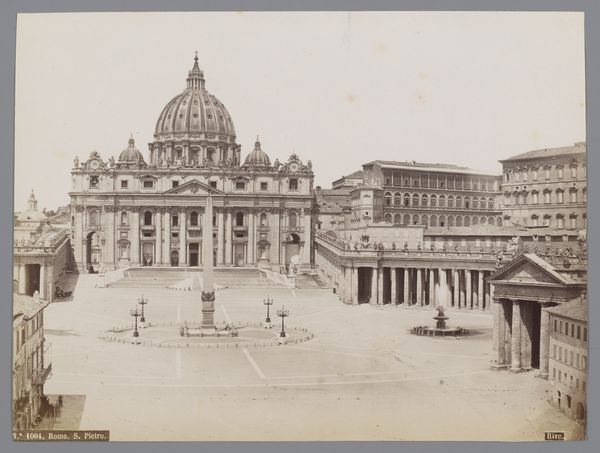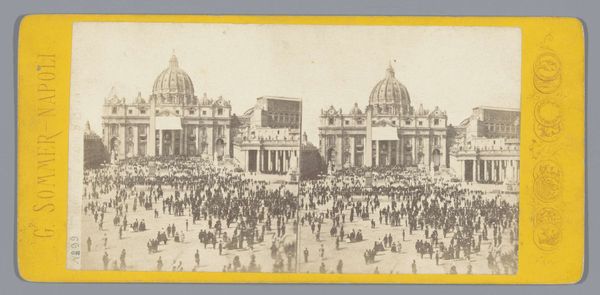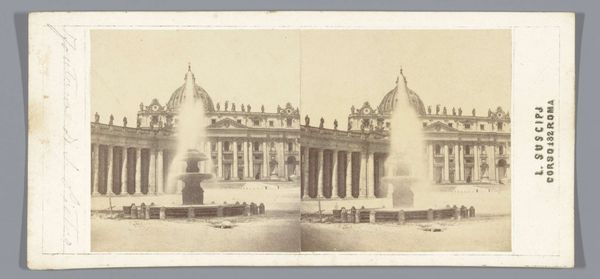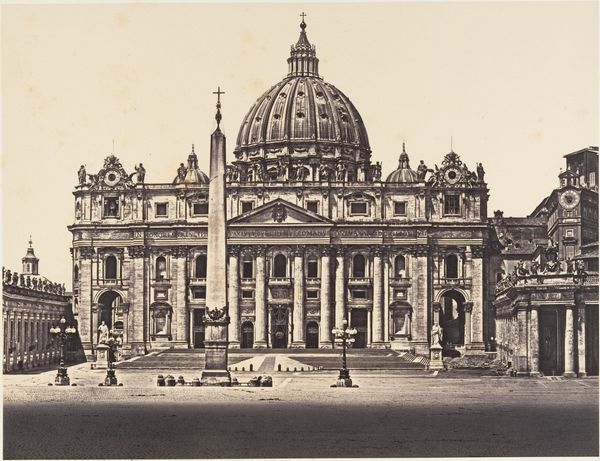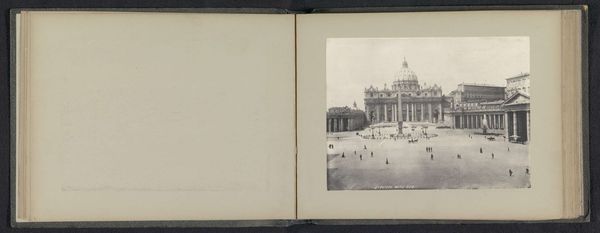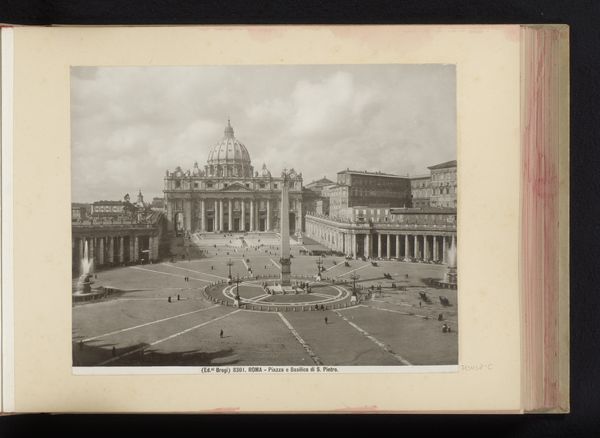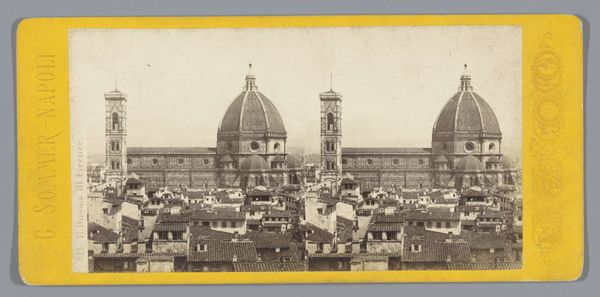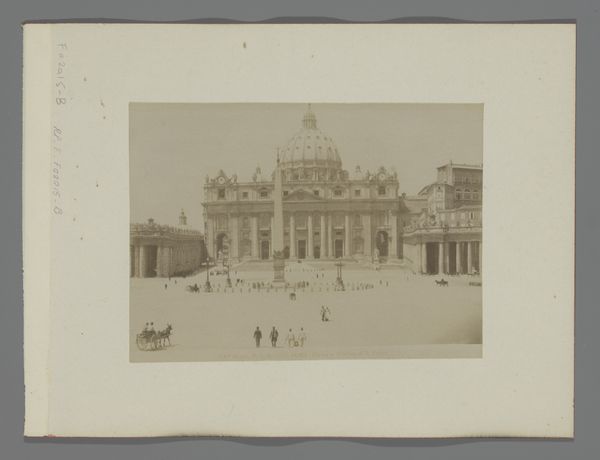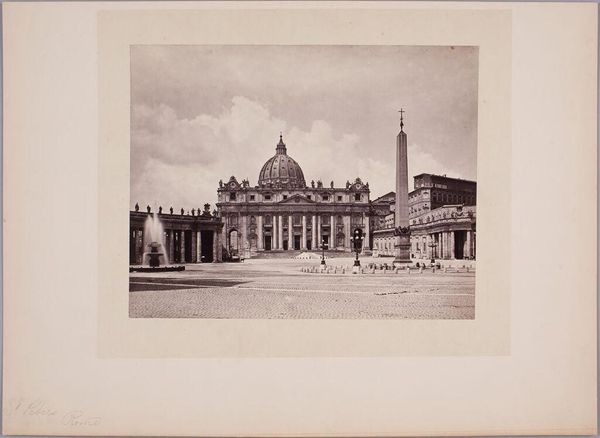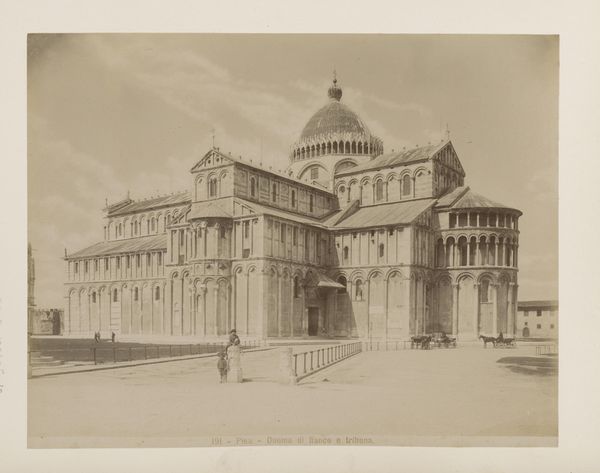
Dimensions: height 84 mm, width 176 mm
Copyright: Rijks Museum: Open Domain
Editor: This gelatin silver print from between 1860 and 1880 by Giorgio Sommer, titled "View of St. Peter's Basilica in Rome", feels almost… staged. What symbols do you see that might have held specific meaning? Curator: It is, isn’t it? Beyond just documenting a building, it invokes ideas about power, faith, and continuity. Consider the Basilica itself: its architectural layers spanning Romanesque, Renaissance and Neoclassical styles all converging. How might this convergence function as a sign? Editor: Perhaps it visually asserts the Church’s endurance and its claim to a lineage stretching back to ancient Rome? The obelisk also suggests that connection. Curator: Precisely! Obelisks were moved to Rome from Egypt. Therefore, the presence of the obelisk acts as a direct, physical symbol, appropriating ancient power into the Papal seat. Also, think about the sheer scale of the Basilica, dwarfing the figures in the square. What feeling does that generate? Editor: An undeniable sense of awe, and maybe a little insignificance. I also can't help but wonder about the photographic process at the time, and how it lent the image this almost detached quality. Curator: True. Photography here acts not just as documentation, but as a means of controlling the narrative. Consider the viewpoint – carefully chosen, centered, idealised. It visually affirms a particular order. Does seeing it this way, as carefully crafted symbolism, alter your initial impression? Editor: Definitely. I'm much more aware of the power dynamics baked into the image. The Basilica becomes a symbol of power. Thank you! Curator: And I’m struck anew by the Basilica's potency, as captured in an early photograph. The cultural memory contained within this single image is truly striking.
Comments
No comments
Be the first to comment and join the conversation on the ultimate creative platform.
